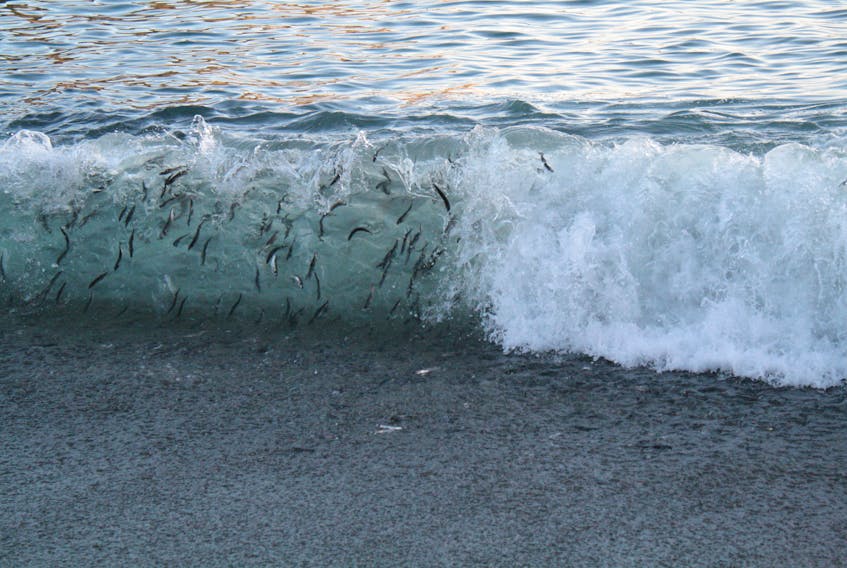ST. JOHN'S, N.L. — They’re delicious fried crispy in a pan, but they’re so much more than lunch.
“Caplin are a tiny little fish, but they have huge implications,” says Victoria Neville, WWF-Canada senior specialist of marine fisheries and ecosystems.
“Caplin feed directly on zooplankton … and because of that, they’re the key link that converts the energy that’s produced in tiny microscopic organisms like phytoplankton, and they can convert all of that energy into bite-sized food that can be consumed further up the food web.

“So, without caplin, there’s not enough food to eat for whales, seabirds, Atlantic cod, salmon — a plethora of species. And the food that species turn to is a much lower nutrient density and quality. So, the more we know about the health and behaviour of this species, the more we know about the future of the larger marine ecosystem as a whole.”
That’s why WWF-Canada is asking Atlantic Canadians to become citizen scientists this summer, and report any sightings of caplin rolling on beaches along our coasts.
"Without caplin, there’s not enough food to eat for whales, seabirds, Atlantic cod, salmon — a plethora of species." — Victoria Neville
Already at ecapelin.ca, there are plenty of reported sightings in the Gulf of St. Lawrence, and there have been a few popping up for the south coast, Trinity Bay and Postville areas.
The citizen science website began in 2017 as a partnership between WWF-Canada and the St. Lawrence Global Observatory, but it supports a network of researchers that includes Indigenous groups, environmental organizations, universities and government researchers.
A video on the ecapelin.ca website says scientists do not yet know a lot about what influences caplin behaviour, but the more they can find out about the health of caplin stocks, the more they can learn about the future of the marine ecosystem as a whole.
A Department of Fisheries and Oceans (DFO) spokesperson told The Telegram that citizen science initiatives such as ecapelin.ca allow DFO to collect valuable scientific data.
“We receive reports from all over the province, and the information is very useful to our overall work to document annual capelin spawning on our shores,” the spokesperson said in an emailed statement on behalf of DFO.

“Understanding the timing and distribution of capelin activity is important, as it is a crucial forage fish in the waters around Newfoundland and Labrador.”
The ecapelin.ca video says recording these citizen-science observations can help to answer important questions, such as how many caplin spawning sites there are across the Atlantic region, how these sites change year to year and what influences their abundance or decline. Determining these things can help guide conservation efforts to protect critical caplin habitat.
“We use eCapelin to understand which habitats caplin need to spawn, but it also helps us to determine the timing and duration of their spawning,” said Neville.
“For example, we know that caplin are spawning later in the year, and we also know that caplin populations have suffered a collapse when compared to the 1990s and before. So, eCapelin enables us to track that.”
Neville said many researchers also rely on the website to time their own projects.
Sightings can be uploaded at the website, but can also be posted on social media using the hashtags #CapelinRoll2020 and #eCapelin. In Labrador, people can also post this information to the Labrador Aquatic Observers Network on Facebook.
Twitter:@juanitamercer_
Note: The Telegram style calls for "caplin" as the spelling for the fish in question; e-mailed correspondence for this story from some groups, such as the Department of Fisheries and Oceans, used "capelin" as the spelling and that is what has been used in quotations taken from that correspondence.









